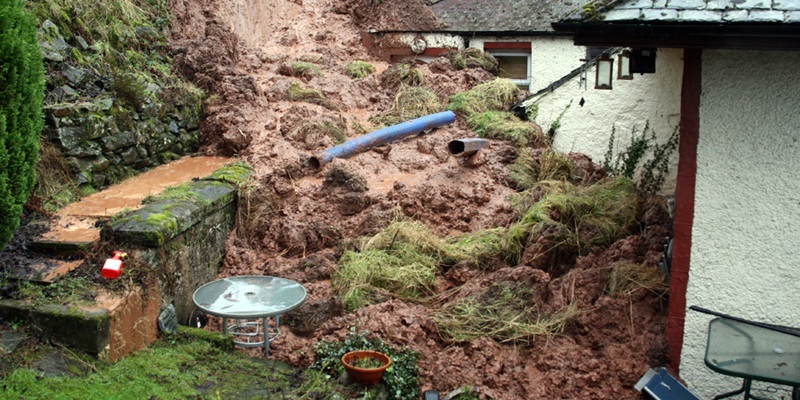Plans to stabilise the crumbling Bervie Braes in Stonehaven and prevent landslips are to be resurrected.
Estimates for the job were ordered by Aberdeenshire Council following a major landslip and mudslide that saw 100 householders evacuated in October 2009.
However, the project stalled in April, after tenders came in £1.8 million more than the £3 million expected.
The future of the project was already in doubt before the extra cost was revealed, as some residents are refusing to return liability waivers to allow it to go ahead.
The Courier can reveal the work is back on the agenda the aim now being to target the sections which present the highest degree of instability in a bid to meet the budget.
A budget for the overall project was set at £3 million, of which £2 million has been pledged by the Scottish Government and the remainder by the local authority.Asked to approveMembers of Aberdeenshire Council policy and resources committee will be asked on Thursday to approve that officers should seek agreement with the Scottish Government on alternative proposals at a total cost not exceeding £3 million and report options to a future meeting.
Officers would also be instructed to continue to work with affected property owners to reach agreement. Members will be well aware of the background to the project, as no less than 17 reports have previously been considered by various committees of the council.
Infrastructure services director Stephen Archer said: “Tenders were invited in February 2011 from suitably experienced contractors to undertake the majority of the works.
“Three tenders were duly received, but the total estimated cost of the project based on the lowest tender and inclusive of projected fees, staff costs, client costs, contingencies and future drainage works was £4.8 million. This was £1.8 million above the available budget.
“Subsequently, Councillor Anne Robertson, leader of Aberdeenshire Council, wrote to Mr John Swinney, Cabinet Secretary for Finance, Employment and Sustainable Growth within the Scottish Government advising him of the situation and requesting additional funding assistance.”
A letter was sent on April 11 2011 and, after a reminder on May 26, with a response received on June 15.
“Unfortunately this made it clear that no additional money was available, but a meeting with Transport Scotland’s engineering specialists was offered to discuss possible options, he added.’Fresh proposals'”As a result of internal discussions and meetings with the council’s geotechnical consultants it was agreed that the only realistic course of action would be to develop a fresh set of proposals that could be accommodated within the available financial allocation.”
Following preliminary works, it was concluded that the proposed intervention on the slope would involve two strands: installing a remote monitoring system to observe ground water levels and targeted interventions to, as far as practicable, reduce the likelihood and impact of future slips.
A meeting subsequently took place with officials from Transport Scotland and they agreed that a risk-based approach was appropriate.
Further work is being undertaken by the council’s geotechnical specialists with a view to developing detailed proposals for review by Transport Scotland.
Mr Archer added: “This risk-based assessment includes the identification of the sections within the scope of the original scheme that present the highest degree of instability.
“This data is being coupled with the consequences of a failure at any particular section. By considering both factors together it is possible to identify the sections within the slope where the biggest improvement can be made in terms of reduced likelihood, and consequences, of future slips.
“Options are being developed that consider different solutions that seek to ensure that the maximum improvement can be delivered in terms of both risk and consequence.
“It is the intention to develop proposals that can be accommodated within the original financial allocation of £3 million.”
The estimated cost for the installation of remote monitoring is around £12,500, and will come from the existing financial allocation.
Running costs will be around £3,000 per annum should remote monitoring extend beyond a year.
The future spend on the project, including remote monitoring, is anticipated to be around £700,000 in 2011/12, £2 million in 2012/13 and £60,000 in 2013/14.
